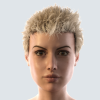Mesh Lights Primitives - Planes vs Spheres vs Other - Bonus light profile musings
 Sevrin
Posts: 6,310
Sevrin
Posts: 6,310
I've purchased light sets, but end up using a mix of spotlights and emissives I configure myself as I go, because it's easy. As a rule, I use planes as my primitives. My reasoning has been that I can create them with 1 division, so that's less geometry. So today I watched this lighting video, and the presenter prefers using spheres, which obviously have many more sides. The only time I've used spheres is when I need to emulate a light bulb inside a lamp shade.
Now I'm not unhappy using planes, but I'm interested in learning better approaches. Is there a specific benefit to using spheres, other than the shape of the emitted light? My concern with them has been that they would have more sides, and that would mean more light sources and that would mean slower render times. Is that how it really works, or does that not have any effect on render times?


Comments
Only way to find out is to do some benchmarks
likely the more polygons more rays but size and other factors would effect it
a cube might be better than a sphere
More polys in the emisson source means more render time. You can achieve measureably the same effect as a sphere by making your plane a two sided emitter. Don't forget that you can use geometry with a spotlight which will give your the advantage of a large light source.
Like you, I typically use planes with 1 division. As noted in the video, he uses spheres, but you can still use planes with ies profiles. In the example below I have a plane, with an overhead ies profile, single sided light to get the down light effect. Turned up the tone mapping cm^2 factor to increase the light. With the wide variety of ies profiles, you can get just about any shape light out of a plane, so you don't need to use a sphere.
Yes, I usually do that for light softening, usually choosing planes. Then if I were to use a spotlight with, for argument's sake, a sphere, rather than a point or plane as light geometry, I'd run into the same issue with render time? Likewise, a disc would be a pseudo circle with a bunch of triangular polygons clustered around the centre point, which would each add to render time?
But when working with IES profiles, they themselves add a lot of overhead to rendering times, although that will vary with the specific profile used. To illustrate, in a quick and very dirty test I did with 2 planes, one a white target and one a white emissive plane. Now I've not created a personal profile library, so I just picked one from a collection I have. I had to angle the source plane to get decent coverage on the target plane with the lighting profile I used, so I made both renders with the same configuration. I adjusted the light source in each case to illuminate a null at centre point of the target plane to the same level of brightness as measured with an external colour picker.
Anyway, the render with the IES took 10782 interations and 83ish seconds to reach 95% convergence, while the one without the IES took 918 iterations and just over 7 seconds. I've yet to try this out using other types of light sources and none of this is scientific, but it does suggest that once you start using lighting profiles, you can expect your render times to increase. I've shied away from using them so far, but they do offer some very interesting possibilities, which is why I was watching that video linked in the OP.
There are apparently some internal calculations or "magic" that work with Iray spotloights. In my experience, using any of the Shapes of sizes has not increased render times over the default point light. A single division plane will calculate in rougly the same time as a Iray Spotlight, but any more divisions will be slower than the spotlight. In fact I never use a spotlight without geometry unless I'm simulating a sunbeam.
Easy enough test for you to satisfy yourself. Frankly I think the general habit of using emissives for general lighting is a 3DL holdover, and too many people aren't aware of the geometry capability. Granted Kindred Arts Ghost Lights are a fabulous solution for lighting large or problematic areas.